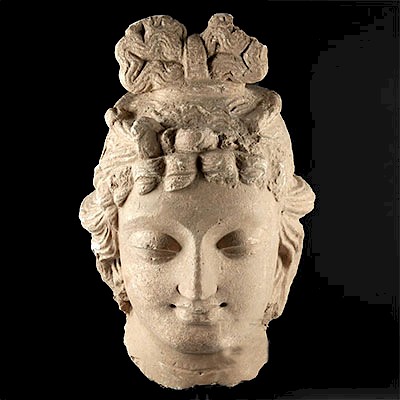Roman Bronze Patera - Handle w/ Silver Inlay & Ram Head
Lot 57
About Seller
Artemis Gallery
686 S Taylor Ave, Ste 106
Louisville, CO 80027
United States
Selling antiquities, ancient and ethnographic art online since 1993, Artemis Gallery specializes in Classical Antiquities (Egyptian, Greek, Roman, Near Eastern), Asian, Pre-Columbian, African / Tribal / Oceanographic art. Our extensive inventory includes pottery, stone, metal, wood, glass and textil...Read more
Estimate:
$3,000 - $4,500
Absentee vs Live bid
Two ways to bid:
- Leave a max absentee bid and the platform will bid on your behalf up to your maximum bid during the live auction.
- Bid live during the auction and your bids will be submitted real-time to the auctioneer.
Bid Increments
| Price | Bid Increment |
|---|---|
| $0 | $25 |
| $300 | $50 |
| $1,000 | $100 |
| $2,000 | $250 |
| $5,000 | $500 |
| $10,000 | $1,000 |
| $20,000 | $2,500 |
| $50,000 | $5,000 |
| $100,000 | $10,000 |
| $200,000 | $20,000 |
About Auction
By Artemis Gallery
Aug 30, 2018
Set Reminder
2018-08-30 10:00:00
2018-08-30 10:00:00
America/New_York
Bidsquare
Bidsquare : Fine Antiquities / Asian / Ethnographic Art
https://www.bidsquare.com/auctions/artemis-gallery/fine-antiquities-asian-ethnographic-art-3402
Featuring classical antiquities, Asian, ancient and ethnographic art from cultures encompassing the globe, plus fine art. Artemis Gallery info@artemisgallery.com
Featuring classical antiquities, Asian, ancient and ethnographic art from cultures encompassing the globe, plus fine art. Artemis Gallery info@artemisgallery.com
- Lot Description
Roman, Imperial Period, ca. 1st to 2nd century CE. A fabulous bronze patera, cast via the lost wax (cire perdue) process - a complete vessel with a characteristically shallow, round bowl with a flanged, rounded interior rim, and a stunning fluted handle with a decorative collar at the juncture joining the bowl boasting lovely silver inlay, and resolving in a ram head terminal at the opposite end. The head of the ram is remarkably detailed with underslung, curled horns - each one finely delineated with ridged surfaces, a fleece coat rendered as individual curls, a long muzzle, and naturalistic facial features. The surface has developed a marvelous patina of green and russet hues, and the weight is pleasing in the hand. Size: 13.5" L (end to end) x 8.25" in diameter (bowl) (34.3 cm x 21 cm)
In ancient times, a patera would have been used to serve food and drink at symposia/dinner parties or as is an offering dish to pour libations of wine and other liquids at religious ceremonies. An example like this one, with such high quality bronze and an ornate ram's head finial was most likely used in rituals.
See another example in the collection of the Metropolitan Museum of Art (1989.281.87) - https://www.metmuseum.org/art/collection/search/255965
Provenance: private East Coast, USA collection
All items legal to buy/sell under U.S. Statute covering cultural patrimony Code 2600, CHAPTER 14, and are guaranteed to be as described or your money back.
A Certificate of Authenticity will accompany all winning bids.
We ship worldwide and handle all shipping in-house for your convenience.
#137689Handle reattached. Expected surface wear, but the detailing of the ram's head, the silver inlaid decorative applique at the handle's end opposite the ram's head, and fluting is still very nice. Bowl section shows some denting and scratching commensurate with age. Wonderful patina of rich green and russet hues.Condition
- Shipping Info
-
All shipping is handled in-house for your convenience. Your invoice from Artemis Gallery will include shipping calculation instructions. If in doubt, please inquire BEFORE bidding for estimated shipping costs for individual items.
-
- Buyer's Premium



 EUR
EUR CAD
CAD AUD
AUD GBP
GBP MXN
MXN HKD
HKD CNY
CNY MYR
MYR SEK
SEK SGD
SGD CHF
CHF THB
THB
















